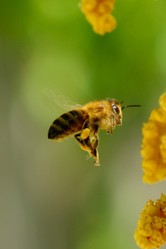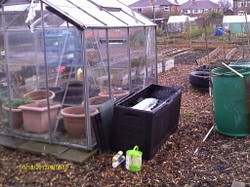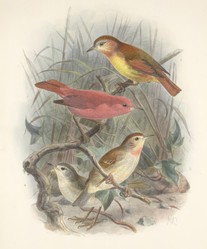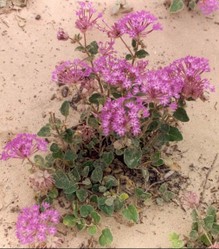Obviously a garden of this kind would be defective if it lacked space for bees, as many kinds as possible, so a honey bee feature will be included, though whether this happens before the garden is moved I know not,as honey bees dislike disturbance. But bumble bees are an endangered animal in Britain,some species of them being critically so. It is hoped that the garden will attract bumble bee colonies. There is hope that butterflies and a variety of moths will take to the garden, though the designer is wise enough to realize that in the matter of stocking the garden's fauna we must leave things to nature. The dead wood will hopefully attract a vast variety of insect types, some of which will come to the garden as new pieces of wood, e.g. dead stumps, continue to be introduced over the years.
It must be made clear that in this garden there are no insects classed as pests, not because they are excluded, but because the concept pest is inapplicable in this garden. Clearly there are no malaria prone swamps in the garden, but there is no room for swamp fauna in this garden. It is not big enough.I must also point out that though I have used the word insect, which applies to six-legged creatures, other animals, such as spiders and mites, cannot and should not be unwelcome. Many people are scared of spiders, but the vast majority of spiders found in Britain are harmless, and the only poisonous ones are imports. I used to have a spiders' nest under my back doorstep in my previous house, and suffered no harm whatsoever.
This garden will be a great asset to the ecological project of protecting the nation's environment. I look forward to seeing it.
I am an Amazon associate and hope to earn money by qualifying purchases on this page.







 TheThousand Year Gardenon 11/26/2025
TheThousand Year Gardenon 11/26/2025
 Women of the Gospelson 10/11/2025
Women of the Gospelson 10/11/2025
 Religious Gardenson 08/25/2025
Religious Gardenson 08/25/2025
 Doctor of the Church: John Henry Newmanon 08/03/2025
Doctor of the Church: John Henry Newmanon 08/03/2025




Comments
I don't know what they choose, but Maureen and I live in a large city where midges and mosquitoes are absent, so she currently is not using any repellents.
Thank you for the ambiant- and sentient-amicable natural suggestions and insect repellent.
They can be tried out this weekend as I do weekly hand-mowing -- in-between Labor Day weekend menus based upon Veronica's delicious recipes -- of the Chicory Cottage acre of non-turf grass and wildflowers and of the Beswick garden of Frank-recommended seed combinations around the front porch.
It's really quite frightening what big mosquitoes have done to my bandaid-covered forehead!
My skin typically may not be sensitive -- a fortunate legacy of scarlet fever as an elementary schooler -- like Maureen's but what would she and Veronica choose for insect-repelling care? Would they do Avon or natural products or both?
Avon skin soft is a well known insect repellent which is on sale.
Some change in advice. Water hyacinth is toxic to domestic pets. While it is good for horses skins, when usedvexternally it is probably not useful for mosquitos. You would be better off using the otherbherbs that I have mentioned.
Mosquito repellent smella:catnip, cedar, cinnamon, cloves, citronella, oil of eucalyptus,garlic,speaking,peppermint and other members of the mint family,
Sorry, I know of none. I did hear years ago that a product, Avon skin Soft was a repellent which worked for men building the Skye Bridge, but I don.t know whether the product works only for midges or whether it is still on sale.
Thank you!
I'll see if I can find oil of water hyacinth oil here. Perhaps it will work against these unbelievably gigantic mosquitoes that fly particularly into my eyes and ears and leave such giant welts that I have bandaids on my forehead and my ears from scratching them when they mostly keep me awake at night and when they rarely let me sleep.
(Would eastern pond-siders have bandaids or an equivalent?)
I have heard that oil of water hyacinth works as a deterrent.
When up at Loch Torridon many years ago with my son we saw a swarm approaching, so I grabbed my son and quickly deposited him in the tent and zipped it. I then finished unpacking, after smearing my face and neck with Vaseline intensive care. Still, the beasts got behind my ears. The Vaseline deterred them. But my wife has very sensitive, fair skin and avoids midges like the plague.
Online sources have awful-looking pictures of highland midge-attacked hands and wrists. They mention a midge repellant spray. They offer nothing in the way of natural repellants or even of what works in the store-bought spray.
Would you know what works against them? Perhaps it would work against the giant mosquitoes here, against which nothing works thus far for me and my now-two-bandaided (one per temple!) forehead ;-{.
We have fireflies, but in the south. We do not have them in the north, where I live. Mosquitoes might be making their entry into the south, but in the northern parts of Britain they would be competing with the Scottish midge. An irritating beastie.